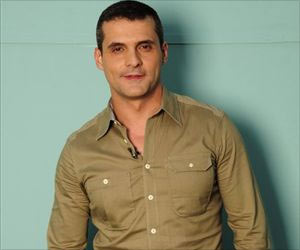Our attention turns to romantic matters of the heart in February.

Astronauts exercise regularly while in space to maintain muscle, bone and cardiovascular health and fitness and to remain fit and strong enough to perform physically demanding tasks such as extravehicular activity. Scientists have frequently measured the effectiveness of that exercise during short spaceflights.
Now, researchers have assessed exercise on longer spaceflights with the help of astronauts on the space station, measuring their VO2 peak before, during and after missions of four to five months.
Widely accepted as the best measure of cardiovascular fitness, VO2peak, also called VO2max, is a measure of peak oxygen uptake. That represents the highest amount of oxygen your body can use to produce energy during exercise. Oxygen is used by cells to provide the energy to perform work and a more aerobically fit person's cells take up and use more oxygen, explains Meghan Downs, senior researcher at NASA's Exercise Physiology Laboratory.
VO2peak is measured using a bicycle test, with astronauts starting at low intensity and gradually increasing pedaling resistance over a short period of time until they could no longer pedal the bike. The tests were performed three months before launch to the space station; after approximately 15 days in space; every 30 days throughout flight; and one, 10 and 30 days following return to Earth.
According to the results, published in the Journal of Applied Physiology, VO2peak decreased by an average of 17 percent by day 15 in space, but then gradually increased during flight. Most astronauts never recovered their preflight V02peak levels during the mission, but a few were able to maintain or even improve VO2peak during flight with frequent bouts of high intensity exercise.
Advertisement
"We now have evidence that VO2peak can be maintained during long-duration missions using available exercise hardware and prescriptions," says Downs. "However, the hardware currently in use on the space station is simply too big and draws more power than exploration vehicles will allow. We will need to find new and creative ways to maintain astronaut health and fitness on those missions."
Advertisement
"High intensity protocols are very effective in the general population," says Stuart Lee, lead research scientist in NASA's Cardiovascular Laboratory. "This form of exercise can benefit not just 20-year olds who want to be fit and strong, but also those in cardiac rehabilitation and pulmonary care." An ongoing study on the station, called SPRINT, is evaluating the effectiveness of this protocol during long-duration spaceflight.
Thanks to these investigations, improved workouts will keep astronauts fit and ready to perform, and could give the rest of us a reason to celebrate.
Source-Medindia










